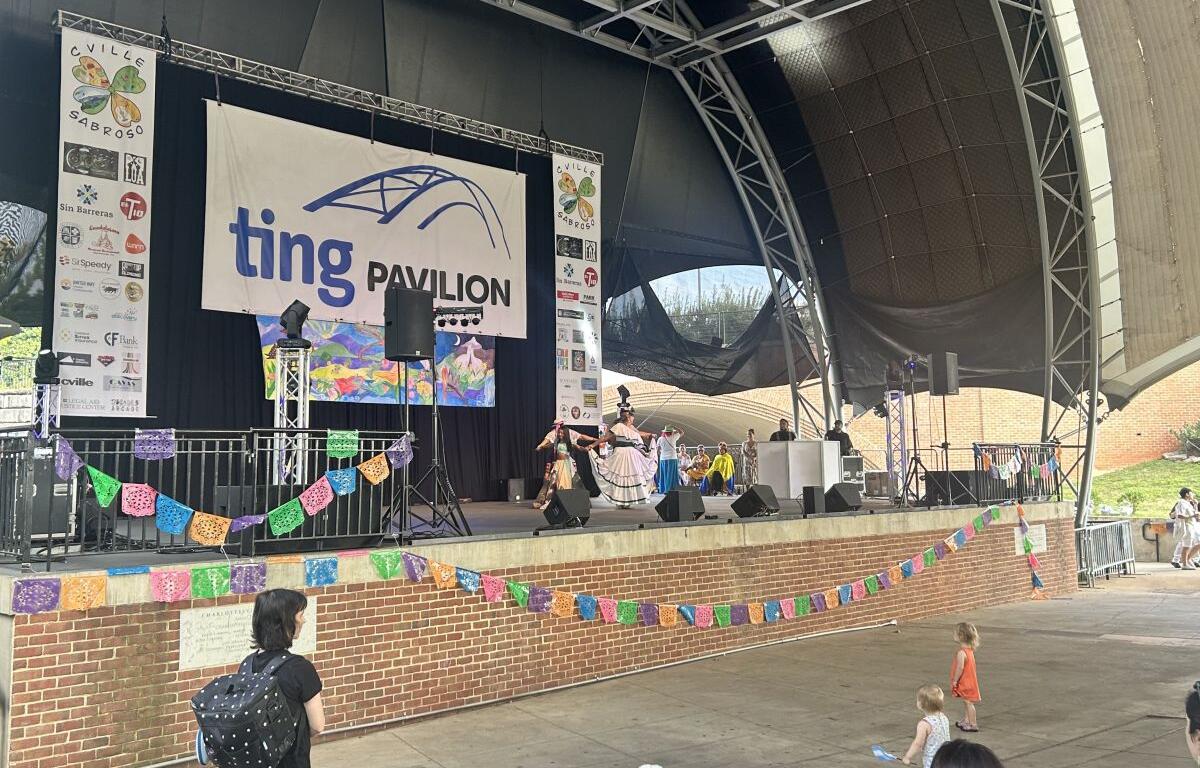CHARLOTTESVILLE (CVILLE RIGHT NOW) — Sitting underneath the Ting Pavilion as musicians and dancers performed on the main stage at Cville Sabroso on Saturday, vendors – including Melissa Ayala and her family – manned tables under the tent, selling all types of clothing, accessories and trinkets.
At Ayala’s table, attendees could buy any number of items that came directly from Mexico, including, among other things toys, homemade bags, sombreros, jewelry, shirts and dresses. Ayala and her family, who are from Ruckersville, attend Cville Sabroso ever year, and mainly sell their items there and at other festivals around the area.
“It’s amazing,” she said of the annual event celebrating Latin American culture. “It’s nice to interact with people. It’s nice to show people our culture. I really enjoy it.”
Elsewhere at the festival, vendors sold food, children played in a kids’ zone and other organizations promoted their work. One such group was MIMA Music, an educational nonprofit that works with 3rd-12th graders to help them create music while promoting collaborative and community-building. The organization had been asked by the festival organizers, Sin Barreras, to come up with some sort of activity for the kids there, and the result was a “music exploration table,” according to Bernard Hankins, MIMA’s Education Director who was at Cville Sabroso to help run the table.
Sitting just across from the main entrance, the organization had a number of instruments for kids to try out, including guitars, other string instruments like a violin, tambourines and a keyboard.
“When you put out instruments, it’s easy,” Hankins said. “It’s like instant magnet, and they don’t really care. They don’t care how they sound. They just want to play. They want to try.”
As a whole, the festival provided a fun, welcoming environment for all ages, a feat that stood in stark contrast to the increased anxiety within the Latin American community.
Sin Barreras volunteer Board member Dan Doernberg spoke to Cville Right Now at the festival and said there was concern during the planning of the event about if members of the Latino community would feel safe at such an event because of what many see as the threat of ICE raids from the federal government.
“It’s really a terrible shame when you know your communities, once-a-year coming together, has this kind of a cloud over it,” he said. “But in general, this year, we’re running it pretty much just like we have in past years, and it’s just fun, every year.”
Doernberg added that this year the festival had more non-Latino volunteers than ever before, with numerous local organizations committing to showing up to Sabroso and helping spread the word.
“That’s been really positive and really downright heartwarming,” Doernberg said.
While Doernberg had spent most of the day at that point behind the scenes and running errands, he said he was excited to spend some more time at the festival as it got closer to its main events in the evening, highlighting in particular the Parade of Flags, which he enjoyed in the past because of how proud the kids participating were of their heritage. He recalled how at his first Sabroso, which he spent as a volunteer before he joined the Board of Directors, he was taken aback by the joy on the faces of those attending.
“I would just watch all these families and little kids smiling on the way in, and then they were all smiling on the way out,” he said. “I thought, ‘That’s the kind of organization I can enjoy putting a lot of volunteer time into.'”



